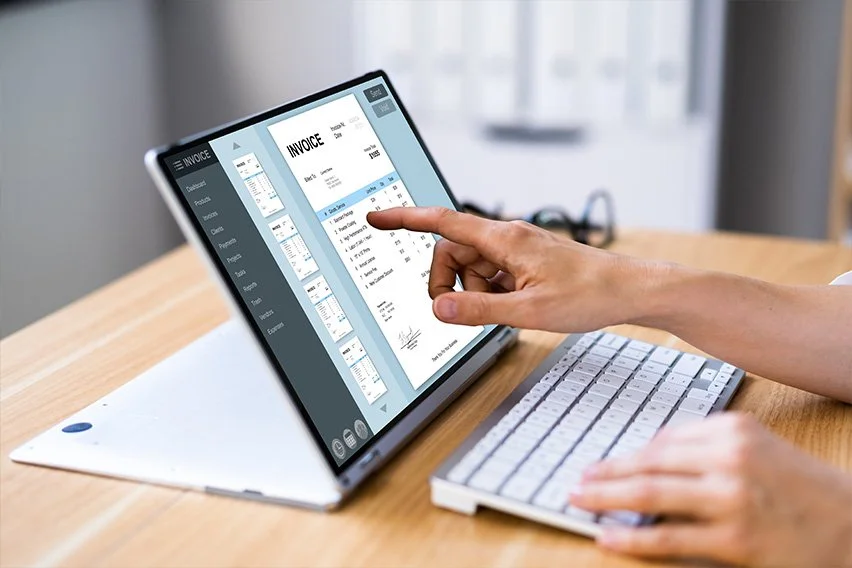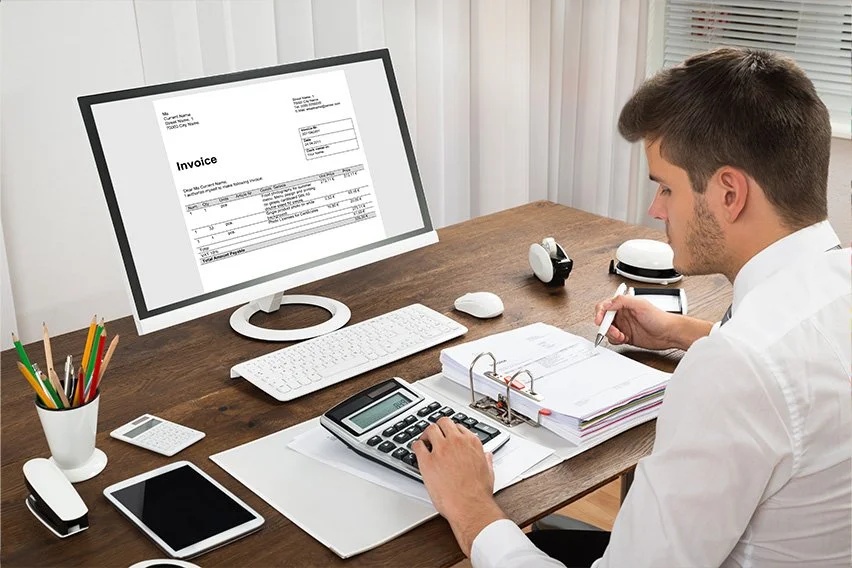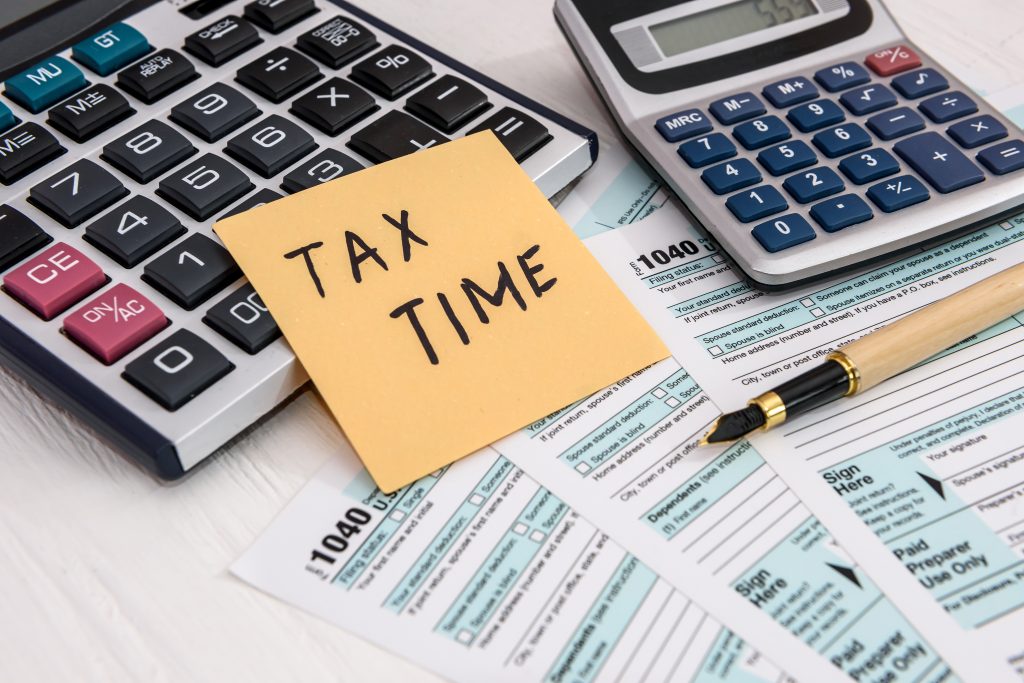What is a tax invoice?
A TAX INOVICE is a specific type of invoice showing the amount of tax payable on a transaction. If your business charges tax on goods or services, this amount should be itemized on a tax invoice.
Why are tax invoices important?
Tax Invoices are important because they show that a business is legally entitled to collect tax on a transaction.
In many countries, if your business is registered to collect tax, you’ll need to use a tax invoice to be compliant with government tax laws and to ensure your accounting records are accurate for the financial year.

What Details Should a Tax Invoice Include?
To create invoices that include all the mandatory relevant tax information, it is important to have the following:
- Invoice number and date
- Customer name
- Shipping and billing address
- The words ‘tax invoice’ clearly displayed
- Seller’s identity and business number
- A description of the goods and services, their quantities, and price
- The tax applied for each item
- The total value, including tax
- Signature of the supplier
When is a tax invoice required?
An invoice is typically required whenever a taxable sale is made. It means that if a business is selling a product or service subject to sales tax, they must provide a tax invoice to the buyer. The specific requirements for tax invoices can vary depending on the jurisdiction, but generally, they are required for any transaction involving sales tax.
Who issues tax invoices?
In most cases, the seller is responsible for issuing the tax invoice. This is because they are the ones who are collecting the sales tax from the buyer. However, the buyer may also need to issue a tax invoice in some cases.
For example, if a business is purchasing goods or services for their use and they are required to self-assess the sales tax, they may need to issue a Tax invoice to themselves.
Types of tax invoices

1. Full tax invoice
A full tax invoices are the most detailed type of tax invoice. It includes all of the required information for a valid tax invoices, such as the seller’s name and address, the buyer’s name and address, a description of the goods or services, the quantity and price, any applicable taxes, the date of the transaction, and an invoice number. A full tax invoice is typically required for larger transactions or for transactions involving international trade.
Example: A construction company hires a contractor to build a new office building. The contractor provides a full tax invoice to the construction company, including all required information for the transaction.
2. Simplified tax invoice
A simplified tax invoice is a less detailed version of a tax invoice. It includes less information than a full tax invoices but still meets the requirements of a valid tax invoice in the jurisdiction. Simplified tax invoices are often used for smaller transactions or for transactions where the full invoice requirements are not necessary.
Example: A coffee shop sells a customer a cup of coffee and a pastry. The coffee shop issues a simplified tax invoice, which includes the name and address of the coffee shop, the date of the transaction, a description of the goods sold, and the total amount due, including any applicable taxes.
3. Electronic tax invoice
An electronic tax invoice is issued and received electronically. This type of tax invoice is becoming increasingly popular due to the convenience and efficiency of electronic transactions. Electronic tax invoices must meet the same requirements as paper tax invoices to be considered valid.
Example: An online retailer sells a product to a customer through their website. The retailer issues an electronic tax invoice to the customer, which includes all of the required information for the transaction, and the customer receives the invoice via email.
How to prepare a tax invoice?
Preparing a tax invoice is an important task for businesses as it ensures compliance with tax laws and helps in smooth transactions. Here is a step-by-step guide on how to prepare a tax invoice.
Steps to prepare a Tax invoice
Step 1: Gather the required information
Before creating a tax invoice, businesses must gather all the required information, including the name and address of the supplier and recipient, GSTIN of the supplier, description of the goods or services, quantity and value of the goods or services, applicable tax rates and amounts, and the total amount payable.
Step 2: Choose a template or create your own
Businesses can choose from various online tax_invoice templates or create their own using word processing software. The template should include all the required information and any optional information that the business wishes to include.
Step 3: Fill in the details
Once the template is ready, businesses can start filling in the transaction details, including the invoice number and date of issue, the name and address of the supplier and recipient, and a description of the goods or services provided.
Step 4: Calculate the taxes
The tax amount payable by the recipient can be calculated using the applicable tax rates and amounts. The total amount payable, including taxes, should be clearly indicated on the invoice.
Step 5: Review and finalize
After filling in all the details, businesses should review the tax invoice to ensure that all the required information is included and that there are no errors or discrepancies.
Step 6: Send the invoice to the recipient
Once the tax_invoice is reviewed and finalized, it should be sent to the recipient through email or mail.
By following these steps, businesses can prepare a tax_invoice that complies with the legal requirements and helps to ensure smooth transactions.
It is important to ensure that all the required information is included and any optional information is presented in a clear and organized manner. It helps to avoid any legal issues or disputes in the future.
How is a tax invoice used?
Companies and tax-registered customers claim tax credits on purchases. Of course, the government isn’t going to just hand out tax credits without proof, so tax invoices show that customers and businesses paid their taxes on a purchase and can now legally claim credits.
Specifically, tax_invoices are used for the following reasons:
- Accounting. Tax invoices are used for record-keeping to store transaction information, including any discounts or price adjustments.
- Taxation. These invoices are used to determine and report the tax owed by the seller or buyer.
- Auditing. With tax invoices, tax authorities can confirm they are in compliance with laws and track potential errors or fraud.
- Legal compliance. Tax invoices are mandated in some countries to back a buyer’s claims of an input tax credit.
- Business operations. Tax invoices are used to track sales, manage inventory, monitor cash flow, and show a record of goods and services sold.

How long should you keep tax invoices?
Most of the time, you should keep tax invoices for at least three years, as that’s the time frame the IRS has to decide whether or not to audit your invoice.
How to approve an invoice for payment?
The head accountant of the company has the authority to approve an invoice for payment.
Here are the steps to follow to approve an invoice:
- Verify the invoice against the purchase order
- Check the invoice for discrepancies
Since AHG’s an Approved Tax Agency in the FTA of UAE and one of the leading Tax Agencies who is specialized in the Excise Tax, AHG’s Services range from Tax Registration, Tax Filing, Tax consultancy, Warehouse Keepers and Designated Zones Registration,
Stock and Duty Calculation, Advice on Stockpilers, Tax Agent, Digital Tax Stamps
Filing Disputes, Representation in front of the FTA of UAE

